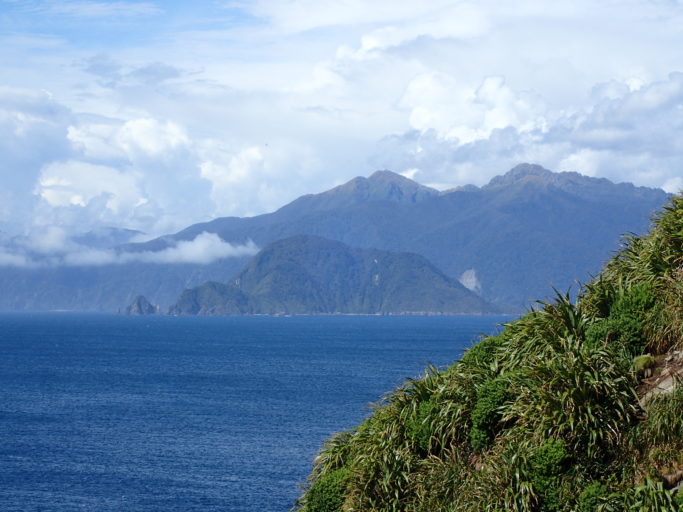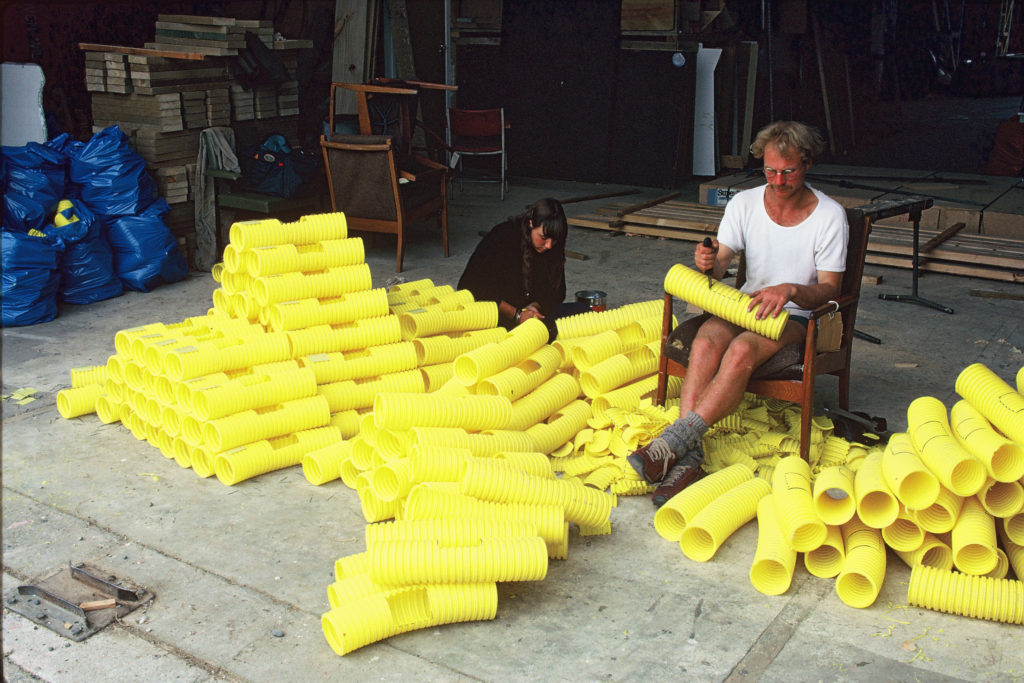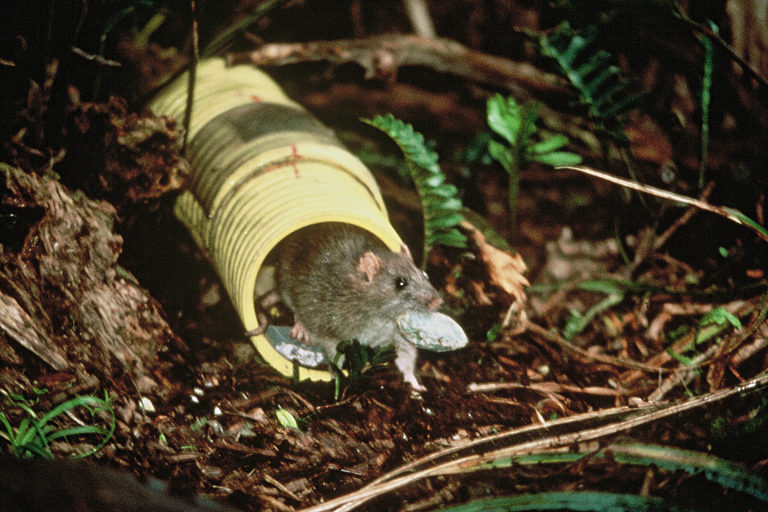Breaksea Island is a 170 hectare, steep, windswept rugged lump of rock located about 2km off the coast of southwest Fiordland and in 1988 it was the scene of a significant step forward in the techniques of island predator eradications.
We now almost take island predator eradications for granted. Back in the 70s, however, getting rid of rats, even from small islands, was considered a remote possibility by the expert scientists of the day. How much things have changed…

The invention of brodifacoum, a second-generation toxin was the first breakthrough in the early 1980s. As Dr Carolyn King explains in her latest book:
“Brodifacoum is a slow-acting toxin, which defeats the cautious taste-a-bit-to-see approach of rats to new foods, by causing no immediate ill effects. The rat concludes that this new stuff is pretty good and returns to take more; soon, it has taken a lethal dose. Over five years 1981–86, the first six successful eradications of rats using brodifacoum (brand name Talon) were achieved on islands ranging from 2 to 21 ha, but bigger islands were still considered far out of reach.”

“Two far-sighted scientists of DSIR Ecology Division, Rowley Taylor and Bruce Thomas, saw how the development of brodifacoum, if allied with ultra-precise bait distribution, might make a significant difference. They were the first to figure out that those early 1981–86 results could be repeated on much larger islands, if only brodifacoum could be distributed so rapidly and thoroughly that every rat’s home range got a share of it. There was no evidence to justify any such attempt, since it had never been tried before, but they planned to do it anyway.”
Nothing like a bit of can-do attitude and some kiwi ingenuity…
To prove their point, Taylor and Thomas chose Breaksea. Breaksea Island is part of Fiordland National Park and is six times the size of the previous largest island on which rat eradication had been successful at that time. Its highest point is 350 metres above sea level and it lies about 2 km from the mainland in the entrance to Breaksea Sound, north of the much larger Resolution Island. Breaksea is covered in temperate rainforest and, for decades, had been infested by Norway rats.
Taylor and Thomas built a hut and two bivvies and set to work.
“First, they cut a measured network of foot tracks in loops around contours of the island,” writes Dr King, “strung climbing ropes up and down its inhospitable cliffs, and established 743 bait stations every 50 m on every surface, horizontal or vertical. Then, in May 1988 they filled every station with brodifacoum tablets, and checked them daily.”
With them on the island was a ‘Wild South’ film crew who filmed ‘Battle for Breaksea’, telling the story of what happened next.
The baits were checked and replaced daily for 22 days.
“As fast as the rats stole the baits and carried them back to their nests, so the team renewed the supply. As each tunnel fell silent, they marked it’s position on a map. Within three weeks, the last of the rats was dead.”

This ship rat is emerging from a bait station on Breaksea Island with poison bait in its mouth. The eradication plan on the island involved building a hut and two bivvies, cutting tracks, and making 743 plastic bait tubes. The 1988 operation resulted in the largest rat-free island in Fiordland. Department of Conservation Reference: 10030608
Bait stations were then checked every few months for two years. No sign of rats was found during 12 visits by the scientists between July 1988 and April 1992.
Fiordland skinks were some of the earliest wildlife to take advantage of the new safe territory. They’d been surviving on offshore rocky stacks and, almost immediately, began moving from their refuges back on to Breaksea Island.
Invertebrates suddenly thrived without rodent predators and numbers of beetles, wētā and spiders reached previously impossible levels. Later threatened native species including South Island tieke (saddleback), mōhua (yellowhead) and knobbled weevils recolonised, or were reintroduced there and Fiordland crested penguins expanded their long-established breeding colonies along the island’s coast.
What had seemed so impossible in the early 1970s, was achieved by the end of the 1980s and eradication teams have gone on to remove predators from bigger and bigger islands ever since – which just goes to show that, even when faced with apparently insurmountable odds, conservationists should never give up.
Read more about Dr Carolyn King’s latest book
Read the original research paper about the eradication of rats on Breaksea Island (only abstract is freely available for non-subscribers).

